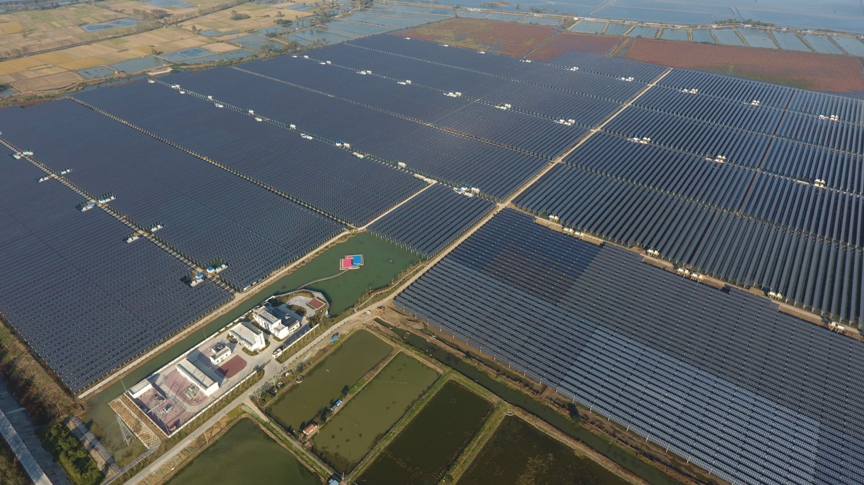Product and Service
Average Mass Production Efficiency of HJT Cell is Expected to Achieve 24% at the End of 2018
On May 10th, the Seminar on High-efficiency Cell, Module Technology Development and Equipment Application sponsored by China Photovoltaic Industry Association (CPIA) was held in Beijing. The seminar had attracted lots of industry experts and famous enterprises, including WANG Bohua, vice-president and secretary-general of CPIA and WANG Xiang from Office of Electronic Basic Products, Department of Electronic Information, Ministry of Industry and Information Technology.
At the seminar, WANG Bohua made a brief review tothe development of photovoltaic industry and photovoltaic equipment industry in China in 2017-2018 Q1. He said, “After more than ten years of development, China’s photovoltaic industry has made remarkable achievements. The scale of our photovoltaic industry has successively dominated the world for many years and our photovoltaic application market has also ranked the first in the world for five consecutive years.China has realized equipment localization replacement in the conventional photovoltaic cell production line. But for the key equipment required by high-efficiency cell technologies, including black silicon, PERC and N-type battery, we still rely heavily on imports. Although some domestic equipment manufacturers are developing or testing samples, the foreign imported equipment still occupy a large market share in high-efficiency battery production lines. In particular, some key parts of the equipment still rely on imports.”
Equipment is the foundation for the development of photovoltaic industry. We must rely on the joint efforts of equipment enterprises and manufacturing enterprises to promote the development of photovoltaic technologies, industrial upgrading and cost reduction in China. With the constant development of China’s photovoltaic industry, both the technology and the installed capacity are increasing. By the end of 2017, the average conversion efficiency of regular mono C-Si and poly C-Si cells has respectively reached 20.3% and 18.7%. The efficiency of mono C-Si and poly C-Si cells which have utilized the PERC technology has respectively reached 21.3% and 20.0%. Besides PERC cell technology, MWT, N-type cell and HJT industrialization are also accelerating. High-efficiency cell technology becomes more and more mature.
According to incomplete statistics, so far, the capacity of domestic HJT cells has reached GW level. At the seminar, Jinergy, as the enterprise that has achieved mass production and shipment of HJT modules, made a report to introduce research situation of mass production technologies and future technical reform plan.

LI Gaofei, technology director of Jinergy, introduced that the average mass production efficiency of Jinergy’s HJT cell has reached 23.27% and its highest efficiency has reached 24.04%. Front side power output has reached 331.23W without adopting half-cut, MBB and other module technologies. Average cell mass production efficiency is expected to reach 24% by the end of 2018.
At Jinergy’s experiment power station in Jinzhong, Shanxi, under the condition of the same floor area, the power generation capacity per unit area of HJT module (JNHM60) is about 40% higher than conventional polycrystalline modules. As summer is coming, the temperature coefficient advantage of HJT will be more obvious.
At present, the main factors that impede the mass production of HJT are the incompatible production line and the high cost. LI Gaofei introduced that the company was devoted to cost reduction from the aspects of silicon wafers, conductive silver pastes, TCO target materials, velvet additives and equipment. The cost gap between HJT products and conventional polycrystalline products is estimated to be about 20% in 2018, and in the future, it is expected to be reduced to less than 10%.
As an ultra-high efficiency technology to promote the quick realization of grid parity for photovoltaic power generation, HJT represents future development direction of ultra-high efficiency technologies. In Q3 2018, the collective demand for high-efficiency photovoltaic products will come out, so the high-efficiency photovoltaic products may face short supply. Besides, the top runner initiative will be carried out soon, which will create new market demands and further promote the industrialization development of efficient cell technologies.

